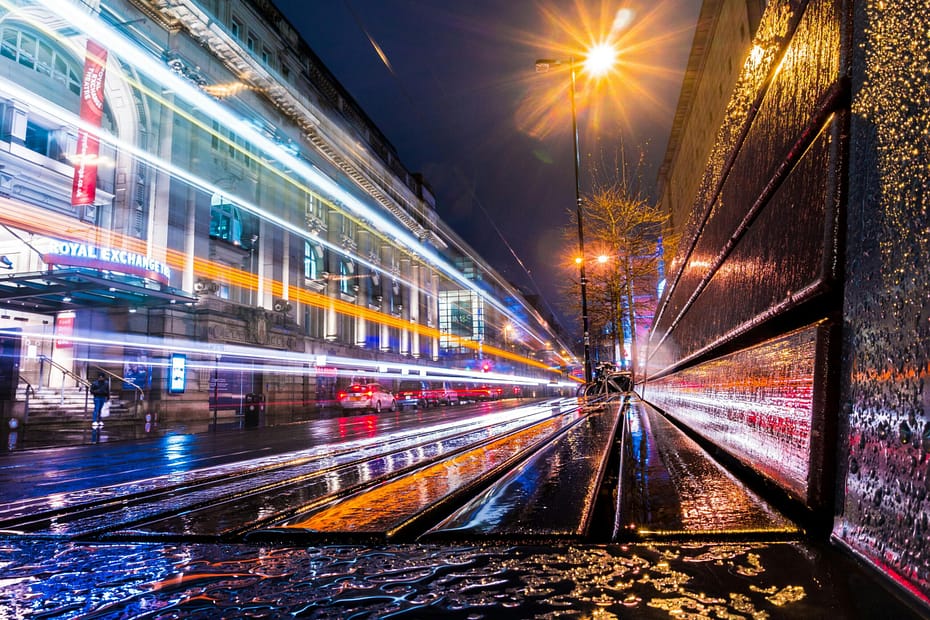Are you ready to take your photography skills to the next level? This article will explore the art of creating stunning photographs with moving light. From capturing the city’s mesmerizing trails of car lights to painting with light during long exposures, this technique can add a whole new dimension to your images. Whether you’re a professional photographer or just starting, learning to manipulate light can unlock endless creative possibilities.
Understanding the Concept of Moving Light in Photography
Moving light photography is about capturing the motion and energy of light sources in your image as it moves across the frame. It involves using longer exposure times to capture the trails and streaks created by moving light sources. Doing so can produce unique and dynamic effects that add a sense of movement and excitement to your photographs.

To understand the concept of moving light, you must grasp the fundamental principles of exposure. In photography, exposure refers to the amount of light that reaches the camera’s sensor or film. If the amount is low, the image is under-exposed. Conversely, if there is too much light, the image is said to be overexposed.
By adjusting the exposure settings, shutter speed, aperture, and ISO (exposure triangle), you can control how much light enters the camera and ultimately affects your image.
Equipment Needed for Capturing Moving Light
You’ll need the right equipment to capture stunning photographs with moving light. While you can experiment with different cameras and lenses, there are a few essential tools that can significantly enhance your results.
First and foremost, a sturdy tripod is essential. Since longer exposure times are necessary for capturing moving light, you’ll need a stable base to avoid camera shaking. Additionally, a remote shutter release or cable release can be helpful to minimize camera movement when taking the shot.
Another helpful tool is a neutral density (ND) filter. ND filters reduce the amount of light entering the camera, allowing for longer exposure times, even in bright conditions. Reducing the amount of light can be particularly useful when photographing moving light during the daytime.
Also, consider using a wide-angle lens to capture a broader perspective and include more light trails or streaks in your frame. However, don’t hesitate to experiment with different focal lengths to achieve unique effects.
Techniques for Capturing Moving Light in Photography
Now that you have the essential equipment let’s dive into some techniques for capturing moving light in your photographs. Note that these techniques will work better when you have complete control of the exposure triangle. It is, therefore, advisable to set your camera to manual mode. In this mode, you, instead of the camera, will decide which shutter speed, aperture and ISO combination to use to capture light movement. Note that there are no ideal settings. Therefore, experimenting is essential to finding the right balance between slow shutter speed and the proper exposure based on your artistic vision.
Long exposure is the most popular and straightforward technique for capturing moving light effects in photographs. Long exposure is when the camera shutter is left open for an extended time period. Once you have set your camera to manual mode or shutter priority mode, you can dial in the amount of time you want the shutter to remain open. Most cameras have a minimum of 30 seconds before the shutter closes. If you need more time, you can set your camera bulb mode, in which case the shutter will remain open until you shut it.
Using a slow shutter speed means that the camera sensor will continue to capture the light sources as it moves across the frame. Slow shutter speed is particularly effective when photographing a moving light source, such as car light trails in the city or star trails in the sky.
Another popular technique used by more advanced photographers is light painting. It involves using a handheld light source, such as a flashlight or sparkler, to paint or draw shapes in the air while the camera’s shutter is open. The result is a trail of light that adds a magical and whimsical element to your image.
Finally, consider experimenting with different light sources and their unique effects. Fireworks, for example, can create bursts of colour and light that can add drama to your photographs. Experimenting also includes playing with different settings and techniques. This will allow you to discover the effects that resonate with your creative vision.

Composition and Framing Tips
Composition is vital when it comes to photographing moving light. To create visually striking images, consider the following tips:
- Use leading lines: Incorporate leading lines into your composition to guide the viewer’s eye toward the subject of your photograph. Note that a leading line can be anything as long as it’s pointing the viewer to the subject. So, a leading line could be a road, a bridge, or even the path of the light trail itself.
- Experiment with angles: Don’t be afraid to change your perspective and capture the moving light from different angles. Get low to the ground or find a high vantage point to add depth and interest to your images.
- Frame your shot: Consider your image’s overall composition and framing. Pay attention to the placement of the moving light within the frame. As we discussed above, if you are using the moving light as your leading line, make sure that you place the starting on the bottom right third of the frame and let it lead to the main subject, which you could put in the upper left third of the frame. This kind of composition is called the rule of thirds and will help you to create a balanced composition.
- Find a compelling subject: Although composition is vital, the subject you photograph greatly impacts the resulting image. A well-composed image with a boring subject will result in a less aesthetically pleasing image. Therefore, look for interesting subjects that will complement the moving light. So, scenes/subjects such as a busy street scene, a flowing river, or even a group of people waving sparklers can add interest to your composition.
Remember that composition is not set in stone. It is subjective. What matters most is your creative expression. Feel free to break the rules and experiment with different approaches to capture truly unique and captivating images.

Editing and Post-Processing Techniques
Editing and post-processing can take your moving light photographs to the next level. It is important t, though, not to overprocess your image. Subtle adjustments go a long way in adding impact to your image. Unless an overprocessed look is what you are going for, minor natural adjustments are better. Here are some techniques to enhance the visual impact of your images:
- Adjust exposure and contrast: Exposure and contrast can change the feel and mood of the image. An underexposed high contrast can add drama to your pictures, while the opposite can bring joy. You can also fine-tune exposure and contrast to highlight the details and colours in your moving light trails. Be careful not to overdo it; you want to maintain a natural and balanced look.
- Enhance colours: Use selective colour adjustments to target colours in the moving light and make them pop. Experiment with saturation, vibrance, and colour balance to achieve the desired effect.
- Remove distractions: Clean up any unwanted elements or distractions in your image. This could include stray light sources or unwanted objects that detract from the main focus. If you are using Lightroom or Photoshop, the content-aware removal tool works wonders.
- Experiment with creative effects: Try applying different filters or effects to add a unique touch to your moving light photographs. This could include white balance, creating a vintage sepia look, converting to black and white or applying a subtle blur to enhance the sense of movement.
Remember, as with art in general, editing is a personal choice, with no rules set in stone. Experiment with different techniques and find a style that best represents your vision and artistic expression.
Examples and Inspiration for Capturing Moving Light in Different Settings
To truly grasp the potential of capturing moving light in photography, let’s explore some examples and draw inspiration from different settings:
- Urban environments: Capture the trails of car lights in a bustling cityscape or the vibrant energy of a street festival at night.
- Natural landscapes: Experiment with long exposures to capture the majestic trails of stars in the night sky or even the dancing lights of the aurora borealis.
- Events and celebrations: Document the excitement and joy of fireworks displays, capturing the bursts of colour and light against the night sky.
- Experimental photography: Push the boundaries of creativity by combining different light sources, such as flashlights or sparklers, with exciting props or subjects.
Remember, these examples are just a starting point. The possibilities are endless, and the only limit is your imagination. Embrace the process of experimentation and let your creativity guide you.
Safety Considerations
While capturing moving light can be an exhilarating experience, it’s important to prioritize safety. Here are some considerations to keep in mind:
- Be aware of your surroundings: When photographing in urban environments or crowded areas, be mindful of your surroundings and stay alert to avoid accidents or collisions.
- Use caution with fire-related light sources: If you’re using sparklers or other fire-related light sources, take extra care to prevent burns or accidents. Always follow safety guidelines and keep a fire extinguisher nearby.
- Protect your gear: Invest in lens filters or hoods to prevent stray light from entering the lens and potentially damaging the camera sensor. Additionally, consider using lens caps or protective cases when not actively shooting.
- Stay visible: If you’re photographing in low-light conditions, wear reflective clothing or carry a flashlight to ensure your visibility to others.
Taking these safety precautions allows you to fully enjoy capturing moving light while keeping yourself and others safe.
Resources and Tools for Learning More about Photographing Moving Light
If you’re eager to learn more about photographing moving light, plenty of resources and tools are available to help you. Here are a few recommendations:
- Online tutorials and courses: Explore online platforms that offer comprehensive tutorials and courses specifically focused on capturing moving light in photography. These resources can provide in-depth guidance and insights to enhance your skills.
- Photography communities and forums: Engage with other photographers who share your passion for capturing moving light. Join online communities and forums to exchange ideas, ask questions, and gain inspiration from fellow enthusiasts.
- Books and magazines: Expand your knowledge by delving into photography books and magazines that cover the topic of capturing moving light. These resources often provide valuable insights, tips, and stunning examples to inspire your work.
- Workshops and photography tours: Consider attending workshops or photography tours led by experienced professionals. These hands-on experiences can offer valuable guidance and feedback while allowing you to explore new locations and subjects.
Remember, learning is a continuous process, and the more you immerse yourself in the world of photographing moving light, the more you’ll grow as a photographer.
Final Thoughts
Capturing moving light in photography is a captivating and creative technique that can elevate your images to new heights. By understanding moving light, investing in the right equipment, and experimenting with various techniques, you can unlock endless possibilities for creating stunning photographs.
Remember to pay attention to composition and framing, as well as utilize editing and post-processing techniques to enhance the visual impact of your images. Stay safe and prioritize your well-being while immersing yourself in capturing moving light.
With the resources and tools available, there’s no limit to what you can achieve. Embrace the journey,
- Creating Stunning Photographs with Moving Light - February 15, 2024
- Artificial Intelligence And Photography - September 18, 2023
- Exciting October Lightroom Update - September 28, 2021

